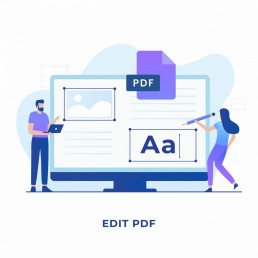Start menu Windows 10: How to activate it in Windows 11 as well
Start menu Windows 10: How to activate it in Windows 11 as well
Instead of establishing Windows 10X as the successor to the popular Windows 10 Pro windows 10X, Microsoft has come up with something completely new: Windows 11 with new features and, most importantly, a completely revamped design. But it is precisely this that is already meeting with little approval from some users. Those who are used to the Windows 10 start menu will find it difficult to switch to the Windows 10 successor. But with a few tricks, you can work as usual with the Windows 11 beta version.
This is different from Windows 10 Pro
As early as the end of June 2021, users were able to download the test builds of Windows 11 via the Windows Insider Programme (the final version should be available at the end of 2021). And anyone who has tried out Windows 11 Beta will quickly realise that many an element has been taken over from Windows 10X Particularly striking is the start of the Operating system. Unlike the Windows 10 start menu, it floats slightly above the taskbar in the 11 version and can also be placed in the middle of the desktop Gone are the live tiles, which had caused some annoyance. In their place, you will now find the pinned programmes in the upper area of the screen, and the most recently used ones just below them. The controls are also placed there – and everything has elegant rounded corners. Microsoft has retained the light and dark modes in the latest version – but without the conspicuous Windows logo. Another innovation is actually old hat – but a popular one! Because with Windows 11, the widgets return. The small snippets of information with the latest news, weather forecast or share prices are still familiar to users from Windows Vista Tip: Computers running the current Windows 10 version can be updated to Windows 11 free of charge. The prerequisite for this, however, is that the hardware is suitably fit.
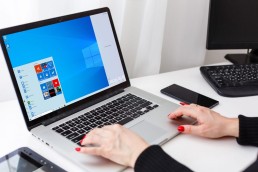
Requirements
- Dual-core CPU (1GHz) with 64-bit support
- 4 GByte RAM
- 64 GByte of memory
- UEFI firmware
- Secure Boot with TPM 2.0
- DirectX 12 compatible graphics card
- Display with at least 720p resolution
If you prefer to return to the Windows 10 start menu: Here are the steps to do so
Microsoft obviously shows understanding for the habits of its loyal fans. That’s why Windows 11 includes an option that allows users to return to their beloved Windows 10 start menu in a flash. However, the programmers have hidden this option a little. But searching is supposed to be fun, as they say.
These are the steps to return to the Windows 10 start menu:
- First, right-click on an empty space on the Taskbar click.
- Then "Taskbar settings activate.
- If not set automatically, now in the left-hand bar "Personalisation in the left-hand bar.
- Now in the window "Taskbar behaviours or "Taskbar behaviours".
- Select the word " left " with the function " Taskbar alignment". This puts the start button, fold-out start menu and other icons back in the usual place.
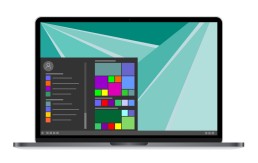
If you like them, you can also bring back the tiles
Windows 10 Pro has caused tremendous displeasure among some users. The cause of the anger was the tiles that housed the apps in the Windows 10 Start menu Some, however, found this to be more elegant and clear than the old design. Windows 11 does without the „tiling“. However, those who love them can also activate the design with a few steps and a few clicks:
- Open the registry editor with the search term "regedit".
- In the navigation bar, enter the command "ComputerHKEY_CURRENT_USERSoftwareMicrosoftWindowsCurrentVersionExplorerAdvanced".
- Now select "Advanced" in the sidebar with a right mouse click
- A context menu appears in which "New - DWORD value (32-bit)" is selected.
- This new DWORD value is named "Start_ShowClassicMode".
- Double-click to open this new value, now enter a 1 under the password "Value" and save with "OK".
- To return to the tile start menu, you now only have to restart the computer
Header Image: © monticellllo, stock.adobe.com
PowerPoint presentation: How to create a timeline
PowerPoint presentation: How to create a timeline
For years, a good PowerPoint presentation has made the explaining world at schools and universities, in evening classes and at business meetings easier, more colourful, more beautiful. What some don’t know: With Microsoft PowerPoint is also an excellent way to create a timeline that visualises, for example, a chronological sequence of events in such a way that it „sticks“. Here we show how to integrate the timeline into a PowerPoint design and even make it more concise with effects.
Does a timeline make PowerPoint more vivid? YES!
Although it is somewhat tricky to use, for instance Microsoft PowerPoint 2016 to insert a descriptive timeline into the PowerPoint design – but the PowerPoint presentation wins! It turns simple PowerPoint templates into a PowerPoint presentation that concisely shows what happened when and in what order. From birth to school enrolment to wedding and all the way to an adventure trip in South America. Of course, the timeline in a PowerPoint presentation is also invaluable in business. For example, if you want to clearly show when a certain business branch started, when the first highlight took place and when the sales figures went up Here we show step by step how the timeline enhances PowerPoint.

1: Set a timeline with Microsoft PowerPoint
- With the drawing function "Line" from the corresponding box in the menu bar, you first define the timeline. Created with the Shift key held down, the line remains exactly horizontal
- In the menu "Draw" menu you can still design the axis. For example, as a coloured line, dotted or in a stronger image.
- If you click on the line with the right mouse button, you can use the function "Set as standard line function. This will format all other lines in the PowerPoint template accordingly.
- At the beginning of the timeline, you now set a much shorter vertical start line as well as a first marker line - again by holding down the Shift key.
2: No timeline without a peak
- Again from the box in the menu bar, first select the block arrow. Click on it with the right mouse button, then "Edit points select.
- Right-click on the lower left point of the block arrow and select "Open path" "Open path select. Delete the two points at the bottom left and the one at the top left. What remains is a simple triangle
- The same formatting as the time axis is obtained by activating the time axis with a click. Then with the key combination "Control + Shift + C" copy.
- Next, click on the triangle and select the key combination " Control + Shift + V". This makes the filling of the shape disappear, the remaining lines are formatted in the same way as the timeline and the marking lines.
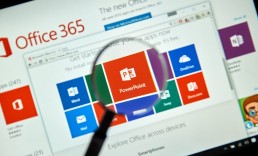
3: Place the timeline in the PowerPoint design
- All the previous strokes including the tip are now roughly positioned at the right place in the PowerPoint presentation
- To fine-tune the elements in the "Start" tab "Arrange - Align - Centre vertically" select.
- Now mark the start line and the time axis and "Arrange - Align - Left-aligned" select.
- For the correct positioning of the tip, select "Arrange - Align - Right-aligned" .
4: The events on the timeline of the PowerPoint presentation
- Now, of course, the "highlights" should also be visible on the timeline of the PowerPoint presentation according to their occurrence
- To do this, first create two text boxes. The first one marks the time of the event, the second one is needed for the actual text.
- The text box for the time is now positioned roughly above the first marking line, the second below it.
- Now mark both text boxes as well as the vertical line "Arrange - Align - Centre horizontally" select.
- In the next step, group the three elements with "Arrange - Group" so that all elements can be copied at the same time or moved by drag and drop.
- With the commands "Control + C" or "Control + V all elements can now be copied and pasted in any number at the desired position
- Before you fill the individual event boxes with text, select all elements and choose "Arrange - Align - Distribute Horizontally" so that all events are displayed at the same distance from each other.
Header Image: © Aleksei, stock.adobe.com
Unprotect Excel sheets: This is how it works
Unprotect Excel sheets: This is how it works
It makes your hair stand on end: There you are, having painstakingly created a perfect spreadsheet in Excel at last. You send it to the team members or the boss – and they change a value here, move a cell there or even delete the important table completely. All the work was for nothing … To prevent this, individual or even all cells of such a worksheet can be locked and the entire sheet can be secured with a password. But what if you still have to work on it later? Then it makes sense to be able to unlock the Excel sheet. Here we show step by step how this works.
Unprotect Excel sheets with a few clicks
Actually, you can only unprotect Excel sheets if you know the corresponding password (exceptions to this below). If the sheet is protected with a password, it cannot be edited for the time being. In order to make this possible, five steps are sufficient to unprotect Excel sheets: 1. First open the protected file. 2. Then jump to the cash register „Check“ at the top. 3. Find the category „Changes“ and press the button „Unprotect sheets“. 4. Now the password must be entered in the corresponding prompt field. 5. Confirm with „OK“. To protect an Excel sheet with Microsoft Excel again, a new password is created via the button „Protect sheet“.
Microsoft Excel keeps a loophole open
Too bad if you have secured an Excel spreadsheet with a password as a precaution – and then forget exactly that! Do you then have to do all the work all over again and create a new Excel spreadsheet? No! Fortunately, with Microsoft Excel and an additional tool, you can remove the Excel sheet protection without using the password.
How to remove the Excel password
If you want to remove the Excel sheet protection without knowing the password, you first have to download the programme 7-Zip for free and install it on your PC. Once all this has been done, proceed as follows:
- Open the folder with the corresponding Excel file.
- Right-click on the file and open it with the command "7-Zip > Open".
- A folder with the name "xl" is shown, which must be opened.
- Select the term "worksheets" in this folder.
- Copy the file "sheet1.xml" that appears to the desktop.
- open "sheet1.xml" in a word processing programme, leaving the 7-Zip programme open.
- In Excel 2010, search for the term "password" using the "Search" command (key combination "Ctrl + F") (in Excel 2013 and Excel 2016, enter "sheetProtection" as the search term).
- In the Excel 2010 file, the entry with the password is now displayed in inverted commas.
- Delete the password (not the inverted commas!).
- The display must now show password="". (As of Excel 2013, the display must look like this "<sheetProtection>").
- Save the file "sheet1.xml".
- Next, copy the file m 7-Zip archive to the same place where it was before.
- Mark the pop-up option field with "Yes" and close the 7-Zip programme.
- Now open the file with Microsoft Excel.
- Now, as described above, the Excel sheet protection can be removed with a few clicks.
Does this work with the whole Excel file?
That would be too good – especially for people who would have unauthorised access to protected files. That’s why the steps only work if individual Excel sheets are protected with a password.
Help - the button "Unprotect sheets" cannot be activated!
If the button „Unprotect sheets“ is greyed out and cannot be clicked, the document probably has a release protection. In order to be able to edit the document, this must first be removed.
- First click on Check > Unprotect.
- Then release the Excel spreadsheet with Check > Release Workbook.
- In the window that now appears, click on "Allow multiple users to edit at the same time". This also enables you to merge workbooks.
- In the next window, simply confirm with "Yes".
Unprotect Excel sheets: This is how it works
Unprotect Excel sheets: This is how it works
It makes your hair stand on end: There you are, having painstakingly created a perfect spreadsheet in Excel at last. You send it to the team members or the boss – and they change a value here, move a cell there or even delete the important table completely. All the work was for nothing … To prevent this, individual or even all cells of such a worksheet can be locked and the entire sheet can be secured with a password. But what if you still have to work on it later? Then it makes sense to be able to unlock the Excel sheet. Here we show step by step how this works.
Unprotect Excel sheets with a few clicks
Actually, you can only unprotect Excel sheets if you know the corresponding password (exceptions to this below). If the sheet is protected with a password, it cannot be edited for the time being. In order to make this possible, five steps are sufficient to unprotect Excel sheets: 1. First open the protected file. 2. Then jump to the cash register „Check“ at the top. 3. Find the category „Changes“ and press the button „Unprotect sheets“. 4. Now the password must be entered in the corresponding prompt field. 5. Confirm with „OK“. To protect an Excel sheet with Microsoft Excel again, a new password is created via the button „Protect sheet“.
Microsoft Excel keeps a loophole open
Too bad if you have secured an Excel spreadsheet with a password as a precaution – and then forget exactly that! Do you then have to do all the work all over again and create a new Excel spreadsheet? No! Fortunately, with Microsoft Excel and an additional tool, you can remove the Excel sheet protection without using the password.
How to remove the Excel password
If you want to remove the Excel sheet protection without knowing the password, you first have to download the programme 7-Zip for free and install it on your PC. Once all this has been done, proceed as follows:
- Open the folder with the corresponding Excel file.
- Right-click on the file and open it with the command "7-Zip > Open".
- A folder with the name "xl" is shown, which must be opened.
- Select the term "worksheets" in this folder.
- Copy the file "sheet1.xml" that appears to the desktop.
- open "sheet1.xml" in a word processing programme, leaving the 7-Zip programme open.
- In Excel 2010, search for the term "password" using the "Search" command (key combination "Ctrl + F") (in Excel 2013 and Excel 2016, enter "sheetProtection" as the search term).
- In the Excel 2010 file, the entry with the password is now displayed in inverted commas.
- Delete the password (not the inverted commas!).
- The display must now show password="". (As of Excel 2013, the display must look like this "<sheetProtection>").
- Save the file "sheet1.xml".
- Next, copy the file m 7-Zip archive to the same place where it was before.
- Mark the pop-up option field with "Yes" and close the 7-Zip programme.
- Now open the file with Microsoft Excel.
- Now, as described above, the Excel sheet protection can be removed with a few clicks.
Does this work with the whole Excel file?
That would be too good – especially for people who would have unauthorised access to protected files. That’s why the steps only work if individual Excel sheets are protected with a password.
Help - the button "Unprotect sheets" cannot be activated!
If the button „Unprotect sheets“ is greyed out and cannot be clicked, the document probably has a release protection. In order to be able to edit the document, this must first be removed.
- First click on Check > Unprotect.
- Then release the Excel spreadsheet with Check > Release Workbook.
- In the window that now appears, click on "Allow multiple users to edit at the same time". This also enables you to merge workbooks.
- In the next window, simply confirm with "Yes".
Important information about Windows 11
A new Windows experience that brings you closer to the people and things that matter to you.
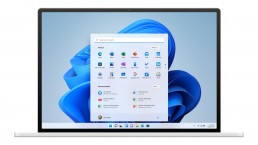
Release
Microsoft Windows 11 will be the successor to Windows 10 and was announced by Microsoft product manager Panos Panay on 24 June 2021. According to the June 2021 announcement, the new operating system will be released at the end of 2021 What is the difference between Windows 10 and Windows 11? Windows 11 offers all the power and security of Windows 10 with a redesigned and updated look. It also includes new tools, sounds and apps. Every detail is taken care of. It all adds up to a refreshing experience on your PC. When can I buy a PC with Windows 11 pre-installed? PCs with Windows 11 pre-installed will be available later this year. How much does a PC with Windows 11 cost? It depends. Many different manufacturing companies will offer a variety of devices running Windows 11, all at different price points. Where can I buy a PC with Windows 11? PCs pre-installed with Windows 11 will be available from a variety of retailers later this year. Details will follow.
Will my accessories work with Windows 11? If your accessory runs on Windows 10 and meets Windows 11 requirements, it should run on Windows 11. If you want to be sure, please contact the manufacturer of your accessory. I want to buy a PC now. Can I install Windows 11 later? Most Windows 10 PCs currently sold can be upgraded to Windows 11. In order for the PC to be upgraded to Windows 11, it must meet the minimum hardware requirements and some features require specialised hardware. The timeline for the rollout of the update is being finalised and is expected to begin in late 2021 and continue through 2022. The specific time frame varies depending on the device. How do I know if a new Windows 10 PC meets the minimum requirements? There are a few ways to find out. If you’re in the process of buying a new PC, look for the „Free Upgrade to Windows 11“ notice on the fact label. You can also ask your dealer for confirmation. When can I upgrade to Windows 11 on my Windows 10 device? If your existing Windows 10 PC is running the latest version of Windows 10 and meets the minimum hardware requirements, you can upgrade to Windows 11. The release schedule for the upgrade is still being determined, but for most devices already in use today, it is expected to be ready in early 2022. Not all Windows 10 PCs that are eligible for an upgrade to Windows 11 can be upgraded at the same time. To determine if your PC is eligible for an upgrade, download and run the PC Integrity Check app. Once the update rollout has started, you can check if the update is ready for your device under Settings > Windows Update. What if my PC does not meet the minimum hardware specifications? Can I stay with Windows 10? Yes. Windows 10 continues to be a great version of Windows. We are committed to supporting Windows 10 until 14 October 2025.
How do I know when the upgrade is available for my Windows 10 PC? Updates for Windows 11 will begin in late 2021 and continue through 2022. During this time, we will be doing some behind-the-scenes testing and validation for your specific PC. Windows Update will indicate if and when your PC is eligible. You can check this by going to „Settings“ > „Windows Update“. How much does it cost to upgrade from Windows 10 to Windows 11? It is free of charge. However, only Windows 10 PCs that are running the latest version of Windows 10 and meet the minimum hardware requirements can be updated. You can check whether you have the latest updates for Windows 10 under „Settings“ > „Windows Update“. What is the difference between upgrade and update? An update can consist of bug fixes, security fixes and new features in a version of Windows. Updates are usually made during the course of the year. An upgrade takes place when you change versions, for example from Windows 10 to Windows 11 or editions from Windows Home to Windows Pro. How long is the free upgrade available? The free upgrade offer has no specific end date for eligible systems. However, Microsoft reserves the right to end support for the free offer. This end date will be no earlier than one year after general availability. Can I continue to use Windows 10? Yes. There is no need to upgrade to Windows 11. We will continue to support Windows 10 until 14 October 2025.
Does Windows 11 take up more space on my PC than Windows 10? Windows 11 and Windows 10 require approximately the same amount of storage space. However, additional storage space is required during the upgrade process. Windows deletes this extra space about 10 days after the upgrade is complete. Is Windows 11 a replacement for Windows 10? Windows 11 is the latest version of Windows. However, we will continue to support Windows 10 until October 2025. What happens to my files when I upgrade to Windows 11? By default, all your files and data will be transferred. However, we recommend that you make a backup copy of your files before installation. Can I go back to Windows 10 after the upgrade if I don’t like Windows 11? Yes. After installing the Windows 11 update, there is a 10-day period during which you can revert back to Windows 10, keeping the files and data you brought with you. At the end of the 10 days, you will need to back up your data and perform a „reinstall“ to return to Windows 10. How long does it take to install Windows 11? Downloading and installing Windows 11 will most likely take longer than a typical Windows 10 feature update. You can use your PC while downloading Windows 11 and then have the option to schedule the installation to take place at a time when you do not want to use your PC. Can I upgrade my Windows 10 PC to Windows 11 when I run S Mode? If your PC meets the minimum hardware specifications, Windows 10 Home Edition in S mode can be upgraded to Windows 11 Home Edition in S mode. If your Windows 10 PC is running Pro Edition in S mode, you must exit S mode to upgrade to Windows 11 Pro. Windows 11 Pro Edition is not available in S mode. Can a really old PC run Windows 11? You can use the PC Integrity Check application to determine if your machine is ready to upgrade to Windows 11. Many PCs that are less than four years old can be upgraded to Windows 11. They must be running the latest version of Windows 10 and meet the minimum hardware requirements.
Important note
Windows 10 and Windows 11 will continue to run in parallel. Windows 10 will be supported until October 2025. This is probably also because Windows 11 increases the hardware requirements. If your system is not suitable for Windows 11, you still have a few years. Even if you don’t like the look of Windows 11, you can just stick with Windows 10. It’s still unclear whether Microsoft will continue to release two feature updates a year for Windows 10. Either way, Windows 10 21H2 should be available in autumn, and of course there will be a security update every day.
PDF Password: How to remove it
PDF Password: How to remove it
Some PDFs are already protected with a password by the sender. If you don’t know it, you can’t read the document. But every now and then you also want to protect sensitive documents that you send in PDF format with a password so that they are safe from unauthorised access. Good PDF Converter make this step easy. But how can you remove the PDF password once it has been set? We show it step by step.
How to remove the PDF password in Windows
Naturally, a file that is password-protected can only be opened if the password is known. And only then can the protection be removed, for example to print the document or make changes to it.
This is how it works:
- Open PDF file
- Enter password
- Click on the "Print" option and select "Print to PDF"
- Windows 10 offers the option directly with the command "Microsoft Print to PDF"
- Confirm
- Select the destination folder for the file
- "Click "Save
This will automatically create a copy of the file that you can save without password protection.
The steps for Mac users
Via the browser, removing the PDF password also works with the „Print to PDF“ command, just like on Windows computers:
- Open PDF
- Enter password
- "Select "Print
- Select "Save as PDF" from the drop-down menu in the bottom left-hand corner
- Select destination
- Confirm
An even easier alternative is to open the encrypted PDF with „Preview“. After entering the password, select „File“ in the menu bar, then click on „Export as PDF“ in the submenu. Search for a storage location, confirm – done!

Can the PDF password also be removed on the smartphone?
Of course, mobile phones also offer possibilities in this respect. However, a distinction must be made between Android and iOS (iPhone):
Android
- First you have to install an appropriate app such as Google PDF Viewer or PDF Utilities
- Enter the PDF and decrypt it using the password.
- Then create an unencrypted copy with "Print to PDF" as described above.
iOS:
- Open PDF
- Select the "Share" icon
- Tap the "Print" function
- In the print preview, tap the "Share" icon again
- Select the target volume for the copy
- Confirm
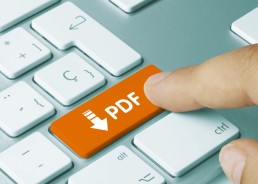
Use PDF software
In order to be able to create a PDF at all, you first need a PDF converter. With such PDF software, you can not only add a PDF password to documents, but also easily remove it again Adobe Acrobat 2020 is at the top of the class here, allowing MIP-protected files to be opened under Windows and Mac. After the security systems AIP (Azure Information Protection) and Information Protection for Office 365, MIP (Microsoft Information Protection) is considered absolutely secure protection for sensitive documents and data in PDF format Adobe Acrobat 2020 (like Acrobat Reader 2020) automatically detects if a file is an MIP-protected file. Users are then automatically prompted to download and install a plug-in from the Adobe help page. This then allows corresponding files that are protected with a PDF password to be opened without any problems.
For Adobe Acrobat DC users
Many users also use the PDF software Adobe Acrobat DC. With this, it is possible to remove the PDF password in just three steps:
- Open PDF file
- In the security settings select "Tools", then in the submenu select "Protect", "More options" and "Remove security settings".
- Depending on the type of protection, you can now remove the password with a simple click on "OK". Or a prompt appears to enter the password, which one must confirm twice with "OK".
Online tools for removing the PDF password
Those who do not want to or cannot carry out the steps described above also have the option of reading and editing password-protected documents online Online PDF softwares such as PDF24 or PDFCreator allow you to copy the protected document to the website. Then all that needs to be done is to enter the password, and seconds later a copy of the document is created without password protection.
Header Image: © Hengki, stock.adobe.com



